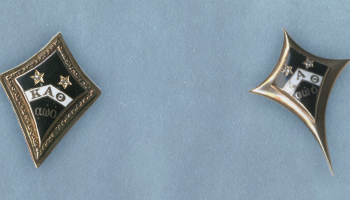Since March 14, 1870, when Bettie Locke, Alice Allen, Bettie Tipton, and Hannah Fitch first wore their new badges to chapel at Indiana Asbury, the kite-shaped pin has been a symbol of membership in Kappa Alpha Theta Fraternity.
Early Badge Designs
The final design for those first badges was simple but elegant. At 1 inch by three-quarters of an inch, they were slightly larger than the current standard badge. The badge of 1870 contained many of the markings found on today’s badges: the white chevron with the Greek letters and two stars. In that first design, a chased border edged the badge.
Once she had designed it, Bettie sought a jeweler who made other fraternity badges. John Newman of New York was contacted, and in his response, he first addressed Bettie as "Sir." We do not have Bettie's response, but he does refer to her as a "Miss" in his next letter.

Multiple Jewelers
For the first 11 years, the official jeweler was Newman & Company of New York. However, members would often go to local jewelers and get their own version of the official design. Found in samples in the Theta archives, the edging changes from a chased border to a rope or bead edging. Some members commissioned more ornate badges with combinations of pearls, diamonds, rubies, garnets, emeralds, and opals decorating the edge of these early badges. As new chapters were established around the country, the Fraternity named more "official jewelers." By 1896, seven official jewelers were located around the country.
Grand Convention eventually passed legislation regulating the design of the badge. In 1889, the Constitution & Bylaws specifically stated that Newman & Company's die was to be used in production of all badges. In 1899, a formal description of the badge was included in the Constitution & Bylaws. In 1907, an attempt was made to standardize the design using only pearls or diamonds, but this effort failed. Legislation in 1909 reduced the size of the badge to 1 inch by two-thirds of an inch.
An Official Jeweler Is Chosen
Finally, in 1915, one official jeweler, Balfour, was chosen. With this move, the days of great variety in badge design were over. Occasionally, other jewelers unofficially made Theta badges. The C.B. Dyer Company of Indianapolis was known for its badges featuring long, extended points, but these were never official.
Through the years, gentle reminders in The Magazine addressed proper use of the badge. In a 1904 issue, members were asked not to use badges "...to supply the missing link in a cuff, to fasten a stock, to pin a belt securely, or even to clasp milady's stray scolding locks." In 1907, Grand Convention passed legislation that restricted the use of the badge design to the badge itself. Members and chapters were not to use the badge design on any other type of jewelry, hat pins, stationery, or other items. The members were asked repeatedly to not go overboard on any decoration on the badges themselves.
Our Badge Today
As of September 2009, J. Lewis Small became Kappa Alpha Theta's official jeweler. Founded in 1915 and located in Elwood, Ind., J. Lewis Small also manufactures finely crafted class rings and recognition awards.
For Our Members
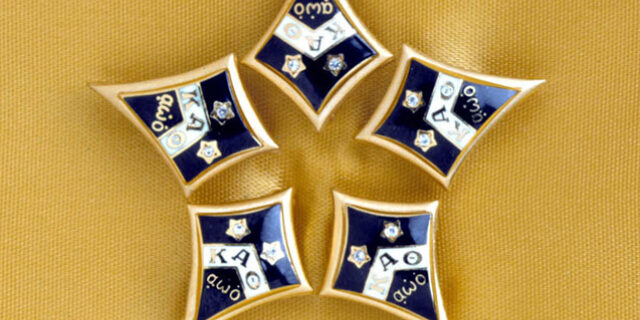
For Our Members
From standard plain badges to badges with jeweled borders, from gold-plated to white gold, Theta badges can be personalized in many ways. All badges are engravable with the member’s initials, date of initiation, and chapter name. Except for the standard plain badge, all badges come in a small and large size. Guards, dangles, and pin-on pendants are available.
Official Badge Manufacturers
Jump to date:
1870
J. F. Newman, New York City, New York
1870-1915
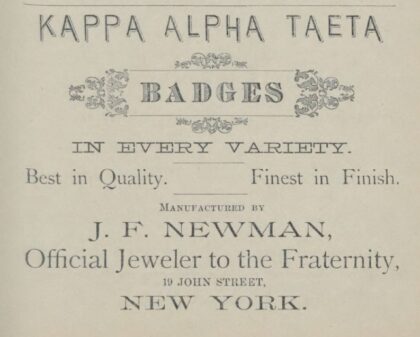
1887
R. A. Heggie & Brothers, Ithaca, New York
1887-1915
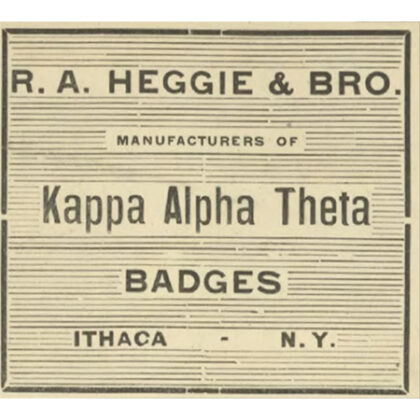
1889
The P. L. Miles, Cleveland, Ohio
1889-1893

1891
Bunde & Upmeyer, Milwaukee, Wisconsin
1891-1893
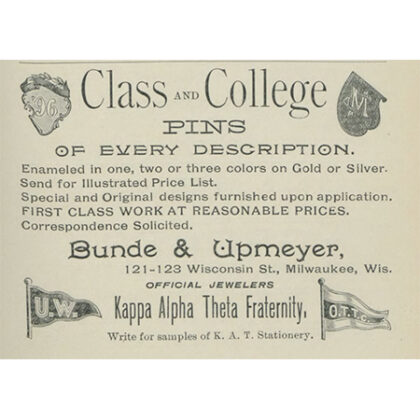
1895
Wright, Kay & Co., Detroit, Michigan
1895-1915
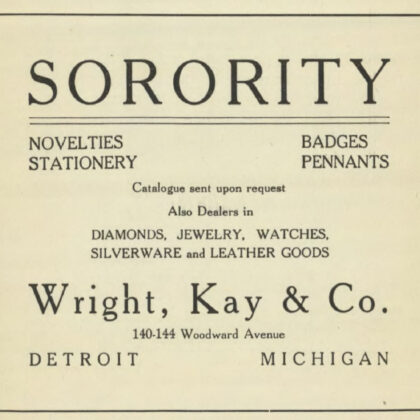
1895
D. L. Auld & Co., Columbus, Ohio
1895-1915
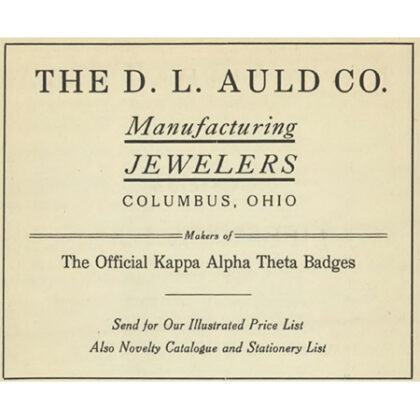
1895
Shreve & Co., San Francisco, California
1895-1901, 1910-1912
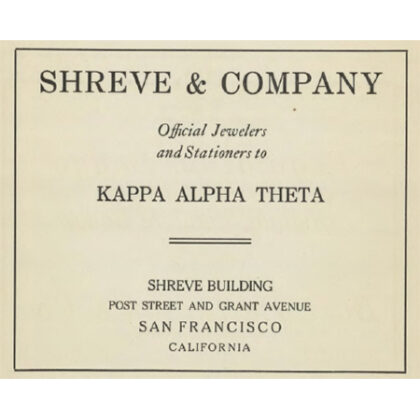
1895
Simons Brother & Co., Philadelphia, Pennsylvania
1895, 1901
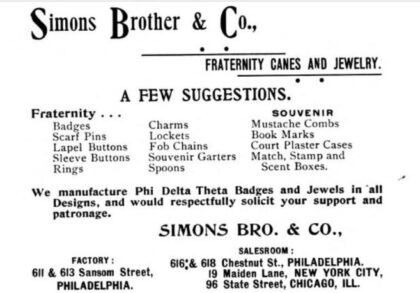
1899
Davis & Clegg/Hoover & Smith, Philadelphia, Pennsylvania
1899-1906, 1907-1915

1902
J. Goodman & Son, Columbus, Ohio
1902-1903
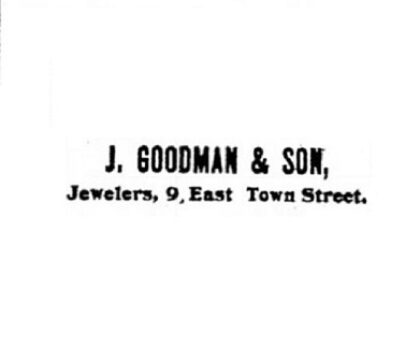
1905
Burr, Patterson & Co., Detroit, Michigan
1905-1915
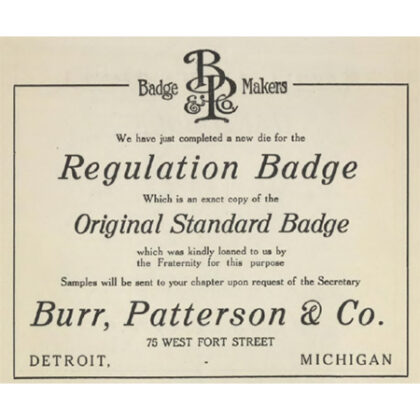
1915
L. G. Balfour Company, Attleboro, Massachusetts
1915-1987

1987
J. O. Pollack & Co., Chicago, Illinois
1987-1990
1990
Burr, Patterson & Auld, Detroit, Michigan
1990-2004
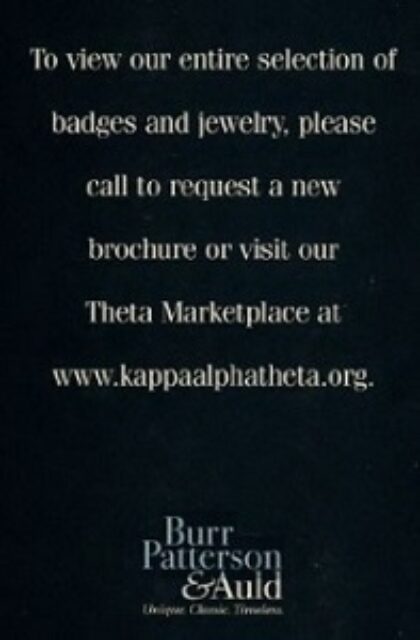
2004
Herff Jones, Indianapolis, Indiana
2004-September 2009
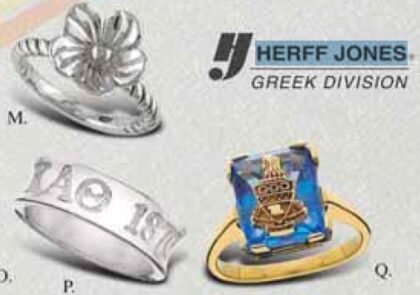
2009
J. Lewis Small Company, Elwood, Indiana
September 2009-Present

Badge Disposition
Members occasionally ask the Fraternity what should be done with badges in situations in which the member is the last Theta in their family. After a member's death, family members or friends may not know what to do with her badge. The Fraternity suggests the following should be done with a badge:
- It may be buried with the member;
- It may be passed along to a family member or friend who is a Theta;
- It may be returned to Theta headquarters. Badges should not be directly returned to the member’s college chapter. Once returned to Theta, the archives staff will determine if the badge should remain with the archives collection or passed on to the college chapter.
To help members bequeath badges appropriately, members can place the Badge Disposition Form (below) with badges (and other Kappa Alpha Theta items!) to ensure they find a good home in the future. Theta will consider special requests expressed by those returning badges. The most common consideration is donating the badge to the member’s chapter for use as a chapter officer's badge or special award badge (e.g. a scholarship badge) or to be given to a member who cannot afford a badge. For many years now, new members receive a badge at the time of initiation, and there may already be a badge designated for the officer or award requested. Theta archives staff will contact the chapter to determine the best placement of the badge.


